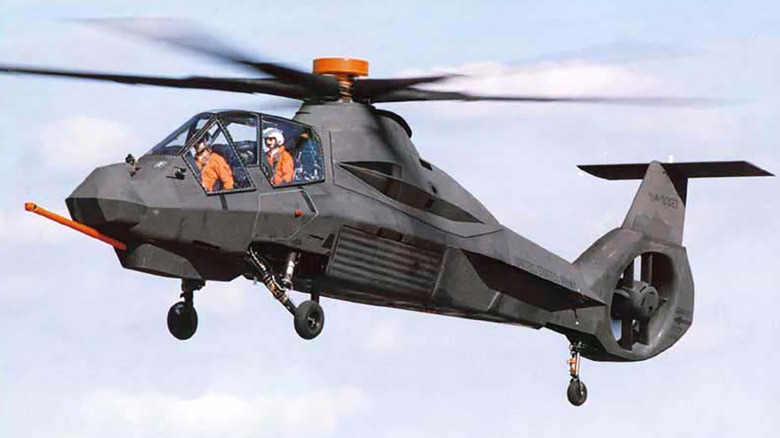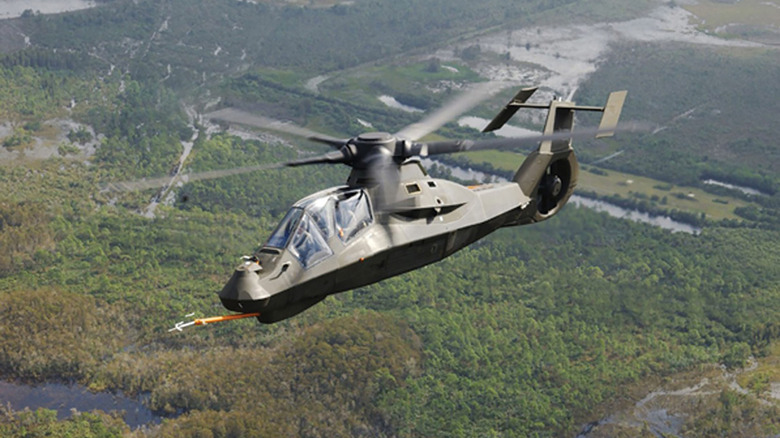The Real Reason The US Cancelled This Multi-Billion Dollar Helicopter Project
Way back in the halcyon days of 2004, the U.S. Army announced it was canceling the Boeing and Sikorsky RAH-66 Comanche stealth helicopter. The news came as a shock to those following the project as the military had already spent $6.9 billion and over 20 years developing the Comanche, according to NBC News.
Why would the military cancel something it had spent so much on? Pentagon officials stated that there wasn't any room in the budget for such a big project and the Army would upgrade their fleet of UH-60 Blackhawk helicopters instead. This is the same military that approved the F-35 Joint Strike Fighter in 1997. That project ended up costing over $1 trillion. Money almost certainly wasn't the only reason.
Warfare was changing rapidly in the early 21st century and drones were becoming the new go-to stealthy recon and attack aircraft. Helicopters, even ones equipped with stealth technology like the Comanche, are huge targets and way louder when compared to the Army's UAVs (unmanned aerial vehicles). Most drones are also cheaper and safer to fly than conventional aircraft.
According to the U.S. Air Force, four MQ-1B Reaper drones cost $20 million, and that figure includes a ground control station and satellite links to allow the crew to operate the drone out of harm's way in the United States. NBC reported that the Comanche was supposed to cost nearly $60 million per aircraft.
Stealth for a New Century
Prior to UAVs like the MQ-1 Predator and MQ-9 Reaper capturing the public's attention during the War on Terror, stealth aircraft were all the rage. Aircraft like the B2 Spirit showed the potential for stealth attack aircraft. The RAH-66 Comanche was supposed to follow that same trend.
The Comanche was a joint venture by Sikorsky and Boeing and was originally intended to act as a reconnaissance aircraft and pinpoint targets of interest, according to Boeing.
Looking like a PlayStation One render of a helicopter, the Comanche was designed to operate stealthily. Its angular body panels allowed it to fly into enemy territory virtually undetected. The Comanche was not designed to be a flying weapons platform like the AH-64 Apache, but it wasn't a slouch either. It boasted a 20mm chin gun and the wing pylons could be equipped with air-to-air or air-to-ground missiles (via Hotcars).
With nearly 20 years of hindsight, it's easy to see why the military favored drones over the stealth wizardry of the Comanche. But back then, a stealth helicopter was the future of warfare.

